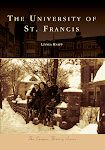 By Kurt Vonnegut
By Kurt Vonnegut1969 - Dell Publishing
Every now and then I like to read a book that falls into the "literature" category. Normally, I gravitate towards very light, general fiction within the young adult sphere, but I recognize that there are good books out there that I might not immediately think to read. This is one of those books. People like to talk about how they had to read it for a class in high school or college and what they did or didn't get out of it.
It was creatively written in that it was a story within a story, kind of like Mary Shelley's Frankenstein. I thought that was interesting. And it kind of centers around the bombing of Dresden during WWII, which I will admit I don't know much about, but made for an interesting centerpiece. But other than that I didn't really like it. It was just weird. When the literary types rave about a book and say how it had deep meaning and all that, they lose me. Here's a direct quote from the back of the book: "Billy Pilgrim's odyssey through time reflects the mythic journey of our own fractured lives as we search for meaning in what we are afraid to know." What?! That sounds so pretentious and it means nothing to me.
It's a book about a guy who writes a book about a character who was a prisoner of war during WWII and managed to survive the bombing of Dresden and who gets "unstuck" in time so keeps popping in and out of different periods of his life, which include a number of years when he was abducted by aliens and placed in the "human" exhibit in their zoo. Again...WTF? If the description of the book was ever actually clearly stated anywhere I wonder how many people would actually read it.


1 comment:
the main literary technique was the use of Eternal Return to drive the plot. The Eternal Return is the assertion that all moment are necessarily going to happen again. So make each moment pregnant with your dreams and explode like a chaotic star because you are bound (condemn) to repeat it. The Eternal Return is how the aliens, Tralfamadores, experience temporal reality.
"There are no telegrams on Tralfamadore. But you’re right: each clump of symbols is a brief, urgent message - describing a situation, a scene. We Tralfamadorians read them all at once, not one after the other. There isn’t any particular relationship between all the messages, except that the author has chosen them carefully, so that, when seen all at once, they produce an image of life that is beautiful and surprising and deep. There is no beginning, no middle, no end, no suspense, no moral, no causes, no effects. What we love in our books are the depths of many marvelous moments seen all at one time."
And this conception of time is how the book was structured by Vonnegut. There is no beginning, no middle, no end, no suspense, no moral, no causes, no effects. A string of nows forming a temporal mobeus strip. So remember, death is just a moment when your ruinous body stops, and as you utter that last breath, you are shifted to another concrete moment that you create (And its your poor imagination that will frame your hell). Nothing can stop you on this cosmic journey--not death, mortality, or moral quandries. It moves on. always. whizzzzzzzzzzzzzzing. And so it goes.
see: Nietzche's concept of the Eternal Return
Post a Comment